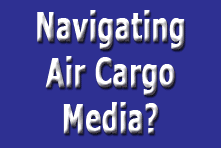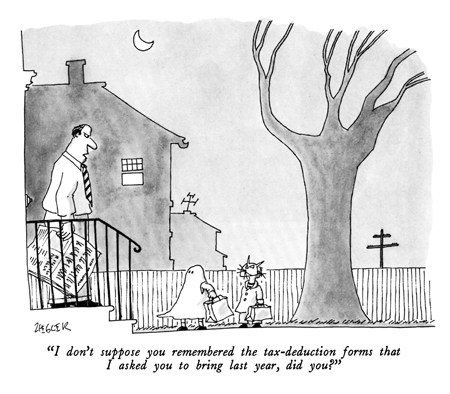
 f
you’re reading this, chances are you are affiliated to or working
within the air cargo business and, beyond that, you have come across the
various surcharge models imposed on both fuel and security more than once. f
you’re reading this, chances are you are affiliated to or working
within the air cargo business and, beyond that, you have come across the
various surcharge models imposed on both fuel and security more than once.
Surcharges rise and fall (although rises are encountered more frequently
than falls), but lately some transportation media coverage has described
“outrage” by shippers and forwarders.
“Surcharge sham,” “surcharge calculation scam,”
and “surcharge rip-off” are just a few terms that have been
routinely employed as headlines or hooks to ramp up readership in the
surcharge story as it continues to swirl in and out of industry attention.
But a closer examination of the facts reveals
some uninformed reporting behind those recent headlines and reports.
This point is important, because right now
there are an increasing number of new media outlets that have focused
on air cargo, and getting editorial right is, in a world where the 24-hour
news cycle is as close as that Smartphone in your pocket, essential.

Basically, the recent “Surcharges
& Chargeable Weight” media dust up that surfaced mid-summer
appeared as a small but important change, but it could result in the cost
of air cargo products going up.
A number of leading air cargo carriers—among
these SQ, EK, AF/KL/MP, and DLH—changed calculation of fuel and
security surcharges to be based on the chargeable weight instead of the
actual gross weight, or plan to do so in the near future.
To be sure, not all is well with the surcharge
mechanism.
All surcharges, no matter their purpose
and how they are imposed, are not subject to the agency commission due
to the forwarder, but typically have to be paid by the forwarder far before
the forwarder can collect his fees from the shipper; this means that the
risk of the shipper defaulting on these charges is borne by the forwarder
alone, without any incentive. FIATA has taken up this issue with IATA
on a number of occasions and likely something will have to change soon.

But the issue here (for a change) is less
about the airlines and more about the manner in which this story about
surcharges. was reported.
The furiously outraged media coverage and
subsequent statements of industry “sources’ (few went on the
record, though many stories were created) could be viewed as “leading
the witness” and thus undermining the credibility and effectiveness
of the press.
We wonder if coverage that implied airlines
are acting improperly and simply piling rates upon rates is actually the
case, and also if these reports have been helpful in any way other than
whipping up a lot of people who obviously would oppose any increases?
After reading these stories, we were reminded
of the grand old lady in a hamburger commercial in America a couple decades
ago, who listened to all the claims, opened up her hamburger bun, looked
inside, and said:
“Where’s The Beef?”
To be sure, a shotgun approach to any story
can generate some readers, and with claims being made or reported as fact
during a story preparation, reactions can be gathered.
But our take echoes that old lady.
“Where’s The Beef?”

Let’s say you have one package with
the dimensions of 120x80x160cm, weighing 180kg.
Since the actual weight is less than the
“volumetric weight,” calculated by multiplying length, width,
and height and dividing the result by 6,000, the volumetric weight of
256 kg must be charged here.
Second, and more importantly, why should
that matter?
But let’s just take one example of the surcharge and chargeable
weight argument raised in one article, which stated:
“(The) penalization of volumetric
cargo makes no sense,” and “shipping of one kg of Ping-Pong
balls attracts higher fuel surcharges than a kilo of mobile phones.”
Firstly, one kilo of Ping-Pong balls will
always yield the same surcharges, but when charges are imposed based on
chargeable weight, the space taken by Ping-Pong balls is what will be
reflected on the air waybill.
That is the simple difference between chargeable
and actual weight.
But looking at this example a bit further,
comparing shipping costs of mobile phones versus Ping-Pong balls is not
useful and a bad example, since mobile phones are a commodity frequently
subject to theft and in most cases will be charged an extra premium for
the risk associated with shipping such vulnerable (VUN) and valuable (VAL)
commodity.
It should also be noted and understood that
in shipping, light and volumetric cargo is usually subject to a number
of restrictions when it comes to cargo loading.
Ping-Pong balls by nature are bulky.
But other volumetric light bulky cargo may
not fit in certain ULDs, may not be stackable, or may be stackable in
a very limited way.
Also, packaging of light bulky cargo may
require extra protection, utilizing fiberboard or wooden slats to guard
against pressure from restraint and tie down during transport.

The challenge of conducting the air cargo
business and covering it requires better understanding from all corners
of the air cargo community.
That is why there are so many trade shows,
beyond the need for air cargo publications and event companies to make
a living.
But as this story with a simple brief look
at one story implies, a look inward at how we conduct ourselves as air
cargo media can be helpful.
As Cassius said:
"The
fault, dear Brutus, is not in our stars,
But
in ourselves, that we are underlings.”

 When
you think about it, almost everything in air cargo begins or ends at the
air cargo warehouse, or as the modernists like to say, the “cargo
transfer facility.” When
you think about it, almost everything in air cargo begins or ends at the
air cargo warehouse, or as the modernists like to say, the “cargo
transfer facility.”
But how often do we read much more about
warehouses than their openings and closings?
More knowledge of what goes down on the
ground, with more stories from the warehouse, could be enlightening.
It is reasonable to assume that anyone who
has spent time in an airline or air cargo warehouse would learn that the
proper build-up of ULD and maximum usage of available space in a combination
of high-density and volumetric cargo—whilst observing all the segregation
requirements for dangerous goods, live animals, and commodities subject
to accessibility requirements etc.—is an art in itself.
And all of this critical activity costs—you
guessed it—money!
As implied, this activity is often not given
much recognition, especially since most airlines farmed out handling to
others some time ago.
But underestimating more of the various
drivers of what is required, and the importance of handling on airline
and GHA bottom lines, is a valid subject.
Without a doubt, better understanding of
the air cargo process by the media reportedly covering the activities
of air cargo is essential.
Jens
|





